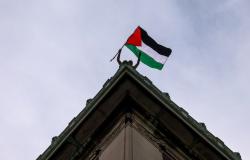
The memorial stones and monuments on the sides of the streets and the plaques on the walls of the houses are not only memories to be preserved to understand the roots of the Italian Republic, but also teaching for the future, encouragement to live with dignity and courage, to commit ourselves to realizing the ideals of freedom, democracy, social justice which find expression in our Constitution, “towards a fairer and more beautiful world”. In order to make this historical and ideal heritage known and valued, Mattia Brighi, Nadia Lucchi, Vincenzo Morrone and Franco Spazzoli collected the results of the census carried out between 2019 and 2020 by the National Association of Partisans of Italy (Anpi) and Auser Cesena in the interesting book “Anti-fascism and Resistance written in stone” (April 2024, Il Ponte Vecchio publishing company). This hotly printed publication will be presented to the public (free admission) Wednesday 24 April, at 5.00 pm, in the Aula Magna of the Malatestiana Library. Mayor Enzo Lattuca and historian Mara Valdinosi will also speak.
The objective of the detailed study is to make available to a large public an agile tool for understanding what are material testimonies of the collective desire to keep the memory of events and people alive, over the decades ranging from the Liberation to today . It is therefore a collection of cards that bring together the descriptive aspect of the memorial recovery and that of essential historical information.
A few years ago Auser and Anpi Cesena jointly decided to launch a joint initiative with the aim of register all memorial stones, monuments and places of remembrance present in the Cesena area with reference to the historical period of the Second World War and the Liberation struggle. The volunteers of the two Associations began a long and accurate research work by preparing specific identification cards in order to obtain a complex and overall picture of the places of memory and of the testimonies that refer to that crucial and dramatic period of history in the Valle area. of Savio. Research that did not limit itself to tracing a dry list of dates and figures but which went into the reconstruction of the events that those monuments recall, transforming the information into a set of stories which, place by place, allow the reader to have a vision articulated but also the overall sense of the contribution that the territory of Cesena and the Savio Valley gave during the dramatic events of that historical period.
The book, supported by the Union of Valle del Savio Municipalities and dedicated to the unforgettable Furio Kobau who participated with great passion in this work despite the difficulties of his physical condition, represents an opportunity to understand how much this territory has been marked by events dramatic events of the war and how much its populations participated in the great Italian Resistance movement and in the fight for liberation from Nazi-fascism. The book, as Carlo Sarpieri recalls in the Preface, “has the merit of holding together facts and dramatic episodes that are apparently different from each other but all attributable to the unacceptable cruelty of war, as demonstrated by the massacres of Tavolicci and Carnaio, but also to the irrepressible will popular that pushed young people, women, families to risk their lives in order to regain freedom and restore dignity and future to their existence and that of the entire country. This Resistance, this sacrifice would not have been possible if there had not been a basic idea that supported it, an idea that had grown during the dark period of fascism, an idea of community founded on new rules, on participation and democracy for which freedom had to necessarily be accompanied with the exercise of rights and duties for all so as to offer everyone the possibility of choosing and managing their own life project. That idea of community, through that terrible resistance experience, found its formal and definitive sanction in the Constitution of the Italian Republic”.
The census. From the census carried out by the operators Auser and Anpi, carried out in the years 2020-2023, thirty-three monuments relating to Resistance and Anti-fascism are present in the Cesena area, of which twenty-seven refer to facts linked to the Resistance and five to Anti-fascism to which is added the crypt of the monumental cemetery in which there are names of partisans, an anti-fascist and soldiers. It is not uncommon to find tombstones that commemorate partisans, civilians and soldiers together and the census included all those in which at least one partisan or in any case a civilian who died at the hands of the Nazi-fascist appears. Breaking down these figures further we will have for the Resistance: twelve gravestones, ten memorial stones, four monuments and a tabernacle, for Anti-fascism: five gravestones. Some people who died in Cesena are also remembered in other gravestones or monuments in their place of origin (for example Cervia and Cesenatico).
Analyzing the works individually, in addition to the lists of partisans and other fallen soldiers, the reader comes across a varied range of political situations: to mention the most significant, in the hamlet of Gattolino both the “Cippo ai Caduti per la Libertà” and the “Monument at the Cemetery” bring together the three ideologies most present in the Resistance: the Sintoni brothers and Vittorio Belli belonged to a lowland communist formation, Pietro Pironi, despite being a practicing Catholic, had joined the mountain communist Brigade while Renato Medri and Primo Targhini joined the Republican group. The memorial stones of the Agapito and Torello Latini brothers, one located between Bagnile and San Martino in Fiume and the other between Bagnile and San Giorgio, having been created by the family, initially recalled only their martyrdom and not that of Peter Maganza and Virgilio Lucci killed with them. Small brass plaques were subsequently added to the lower part of the memorial stones in memory of the other two martyrs. In the stone of San Tomaso, which commemorates the massacre of the three Ridolfis and three other men, there are two tombstones of the Italian Republican Party, one of which is from the Case Finali section, while the tombstones commemorating Giovanni Collina and his father Enrico and the one which celebrates the fallen of the Resistance in San Giorgio, placed on the external wall of the former People’s House, they were created by local communists.
Tags: memories Resistance book accurate study tombstones memorial stones Cesena Savio Valley




